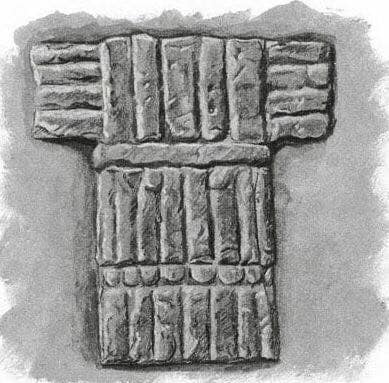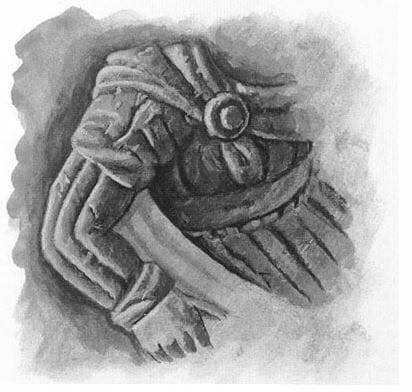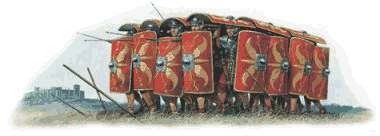Subarmalis
You will need a subarmalis to wear between your hamata and your tunic. Not only does this keep your tunic clean, but it has become clear that some fairly stiff padding and/or leather is essential to allow mail its full protective potential. When properly made and properly padded, mail has been shown to be a far more effective defense than was once thought. It is extremely difficult to cut or break any of the rings under battlefield conditions, though of course it is possible to damage the wearer without actually cutting through the mail. The shoulder doubling may have been backed with leather (or padding), which would have to be cut so that the flaps flair outwards in a slight curve as on the ancient Greek linothorax (linen cuirass). This prevents them from sticking up strangely at the shoulders. (The mail itself can be cut straight because it flexes easily to the proper shape.)
This GREAT bit on the subarmalis is from the The Roman Recruit website and is used with the kind permission of the author, Paul Elliott. Please visit Paul's site and give it a look!

Above Sculpture of Mars the god of war, on an inscription from the fort at Bremenium. Mars wears what looks like a subarmalis.
The subarmalis is a padded jacket worn beneath the lorica hamata (chainmail) or the lorica segmentata. It cushions a blow from an enemy, hopefully preventing broken bones, ruptured organs and internal bleeding, even though the metal armour on top has actually deflected the blade. Graham Sumner argues for a linen garment, with cells stuffed with padding, covered by a waterproofed layer of goatskin.

Above image of a subarmalis from a bas-relief with subarmalis from the Verulamium Museum, 3rd-4th century AD
The subarmalis can sometimes be seen peeking out from beneath armour on wall-paintings and in mosaics of the period, but no physical examples have survived. Typically, the subarmalis is constructed in linen (those depicted are white, which often denotes the use of undyed linen), either a score or more layers glued together, or two layers with wool packed between them and then quilted. Both create a viable 'dead' space behind the ringmail which provides that vital protection from blunt trauma.
Hot and heavy

Above image of a subarmalis from the tombstone of Severius Acceptus Legio VIII Augusta, Istanbul
Obviously, wearing a subarmalis is very hot and heavy to wear — especially when you add on the armour and helmet, and then... all of the weaponry and a shield!

Above image of a subarmalis, from a sculpture in Volterra Italy, possibly shows a subarmalis worn as body armour in its own right.
However, the subarmalis is necessary and without a subarmalis, a blow from a weapon could (and probably would) create "shock" injuries such as the aforementioned broken bones, ruptured organs and internal bleeding.











